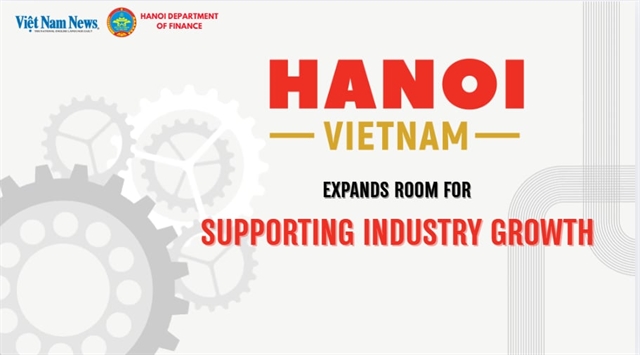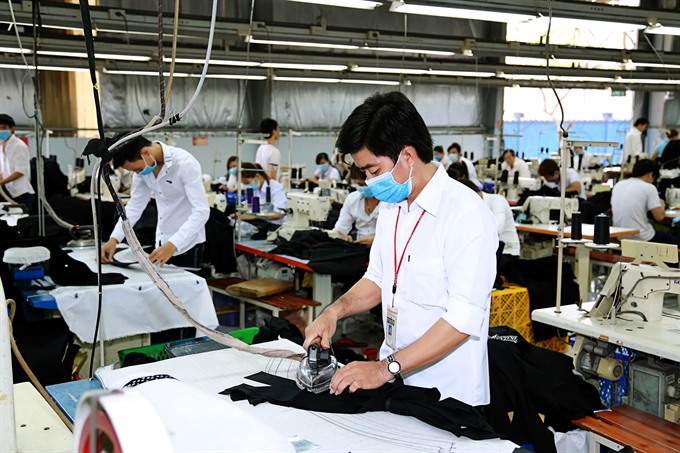 Economy
Economy
.jpg)
Việt Nam’s hopes for a FTA-driven economic rise within ASEAN must now rely on the only free trade agreement seen as realistically achievable, the EU-Việt Nam FTA, experts said at a conference held on Thursday in HCM City.
 |
| Clothing being ironed at the Made Clothing Việt Nam Co Ltd in the southern province of Bình Dương. The wholly foreign-owned company exports clothing to foreign markets, including the EU. — Photo Hải Âu |
Bồ Xuân Hiệp
HCM CITY — Việt Nam’s hopes for a FTA-driven economic rise within ASEAN must now rely on the only free trade agreement seen as realistically achievable, the EU-Việt Nam FTA, experts said at a conference held on Thursday in HCM City.
Global uncertainty and challenges have intensified since the beginning of the year, especially after US President Donald Trump decided to withdraw the US from the Trans-Pacific Partnership (TPP) trade agreement.
Lê Anh Tuấn, deputy CIO and head of research at Dragon Capital, said that Việt Nam, with a large working-age population, the second-fastest growing middle class worldwide, and improved productivity, had many advantages to attract foreign investors.
However, the window of opportunity will close within the next seven to 10 years as the competitive advantages will diminish, he said.
Tuấn and other experts spoke at the “EVFTA: a Game Changer for Việt Nam in ASEAN?” conference, organised by the European Chamber of Commerce (EuroCham) in Việt Nam in collaboration with the EU-Việt Nam Business Network.
Francisco Fontan, EU Ambassador to ASEAN, said the EU had launched a series of FTA negotiations with selected ASEAN countries in order to fully realise the market opportunities for EU companies.
“Among them, negotiations with Việt Nam and Singapore have been successfully concluded. The EU and Việt Nam remain two solid and reliable partners, open for business to ASEAN and to the world,” he said.
The EU has become ASEAN’s second largest trade partner after China, while ASEAN is the EU’s third-largest trade partner outside Europe, after the US and China, he said.
“In fact, bilateral merchandise trade has almost doubled in the past 10 years,” Fontan said. “More impressive still, the EU is the largest investor in ASEAN economies.”
Michael Behrens, chairman of EuroCham, said the EVFTA would “go live” about a year from now.
“The potential of the EVFTA is clear, as its effective application can build on these good trade numbers between Europe and Việt Nam and turn them into a long-lasting and ever progressing partnership, and ultimately into one of the most powerful intercontinental trade and investment corridors in the world,” he said.
“The EVFTA offers Việt Nam the chance to link 500 million Europeans with more than 500 million ASEAN citizens, thus being at the centre of a trade corridor for about one billion potential customers,” he added.
Donald Kanak, chairman of the EU-ASEAN Business Council, said optimism about ASEAN’s future was as strong as ever.
“A comprehensive region-to-region FTA between ASEAN and the EU would be a significant game changer for both regions,” he said.
Regarding Việt Nam’s opportunity in the ASEAN automobile industry with EVFTA, Chris Humphrey, executive director of EU-ASEAN Business Council, said “Việt Nam is in possession of a low-cost base, and increasing concentration of auto parts makers. EVFTA provides Việt Nam with the potential to become one of the fastest-growing car markets in the ASEAN region over the next 20 years.”
Challenges, however, remain due to high levels of competition from Thailand and Indonesia as well as infrastructure and traffic congestion issues.
He urged Việt Nam to raise technical standards and increase local content for global export markets.
Conference participants included key speakers and experts in EU-Việt Nam and EU-ASEAN relations, as well as business leaders and thinkers discussing possible scenarios for the Vietnamese economy in 2018 when EVFTA is slated to come into force. — VNS